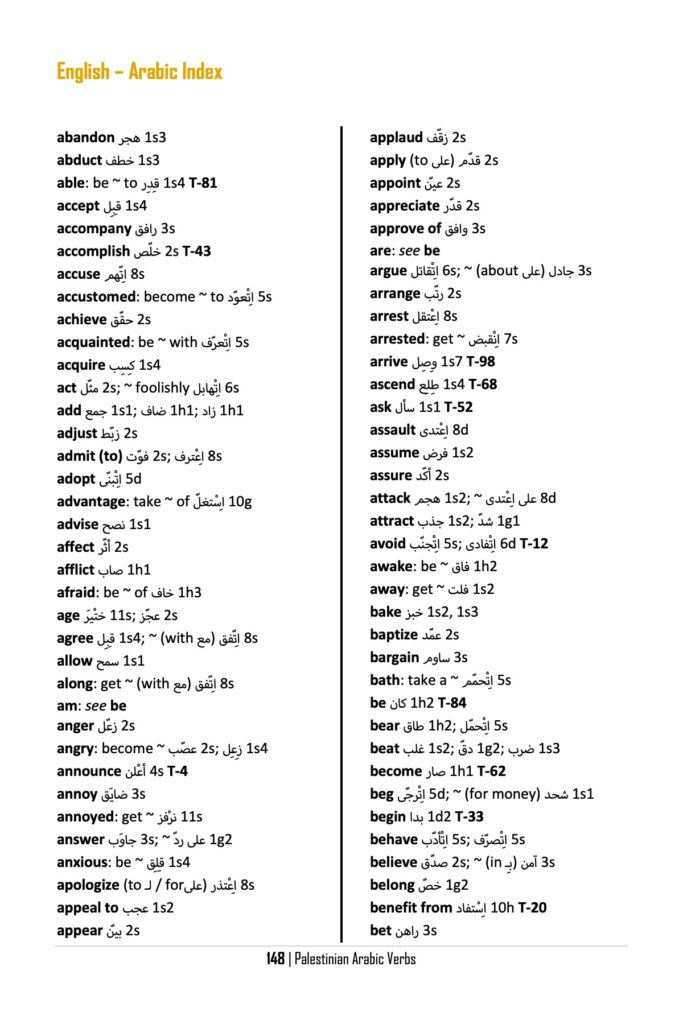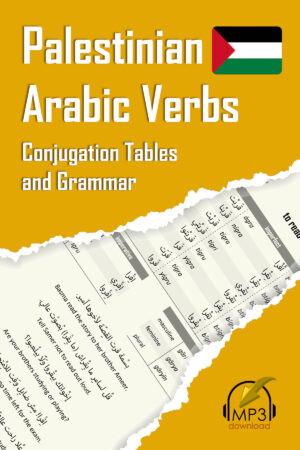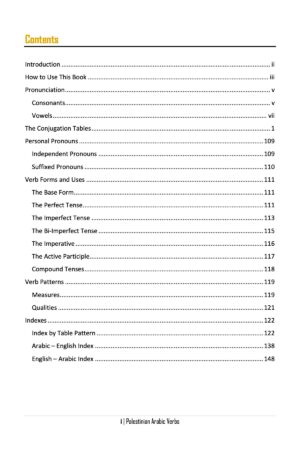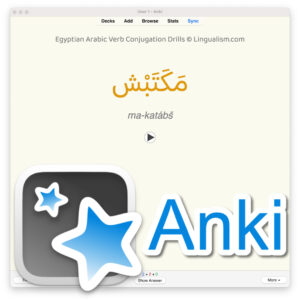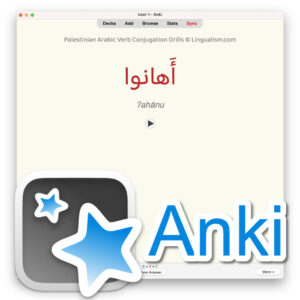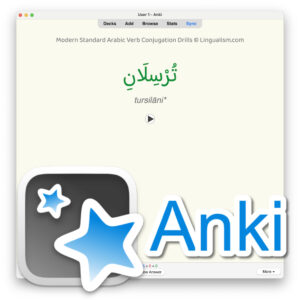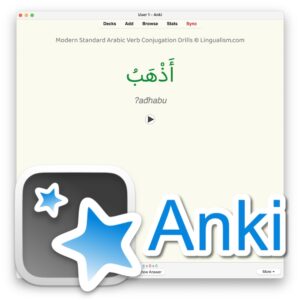Table of Contents
Introduction
Palestinian Arabic Verbs: Conjugation Tables and Grammar was designed as both a reference and self-study learning tool. The book presents over 100 conjugation tables of some of the most commonly used verbs in everyday speech. The tables also serve as models for conjugating practically any verb in the language. The index in the back of the book lists over 750 verbs categorized by conjugation pattern with references to the tables that model each pattern.
Each conjugation table is followed by several example sentences that show the verb in use in various tenses, with common structures (including negation), collocations, and meanings. A concise grammar guide following the tables gives more explicit information on the uses of tenses in Palestinian Arabic.
The conjugation tables show perfect, imperfect, bi-imperfect, imperative, and active participle forms of verbs. (These may also be known by other grammatical names, such as past, subjunctive, present, command, and present participle, respectively.) The passive participle (past participle) and verbal noun (gerund, masdar) are not included in the tables as they are used as adjectives and nouns, falling outside the scope of this book.
I want to thank Ahmed Younis for his collaboration on this project. Ahmed–who is from Gaza, Palestine–tirelessly recited each of the conjugated verb forms on which the tables are based, wrote the example sentences, answered my many, many questions to ensure a high level of accuracy and authenticity of the information, helped edit the materials, and professionally recorded all of the conjugation tables and example sentences.
How to Use the Book
The Tables
Get to know the organization and layout of the pages by clicking on the orange circles. (Turn your device sideways if the text in the blue tooltip boxes gets cut off.)
Get to know the organization and layout of the pages by clicking on the orange circles.
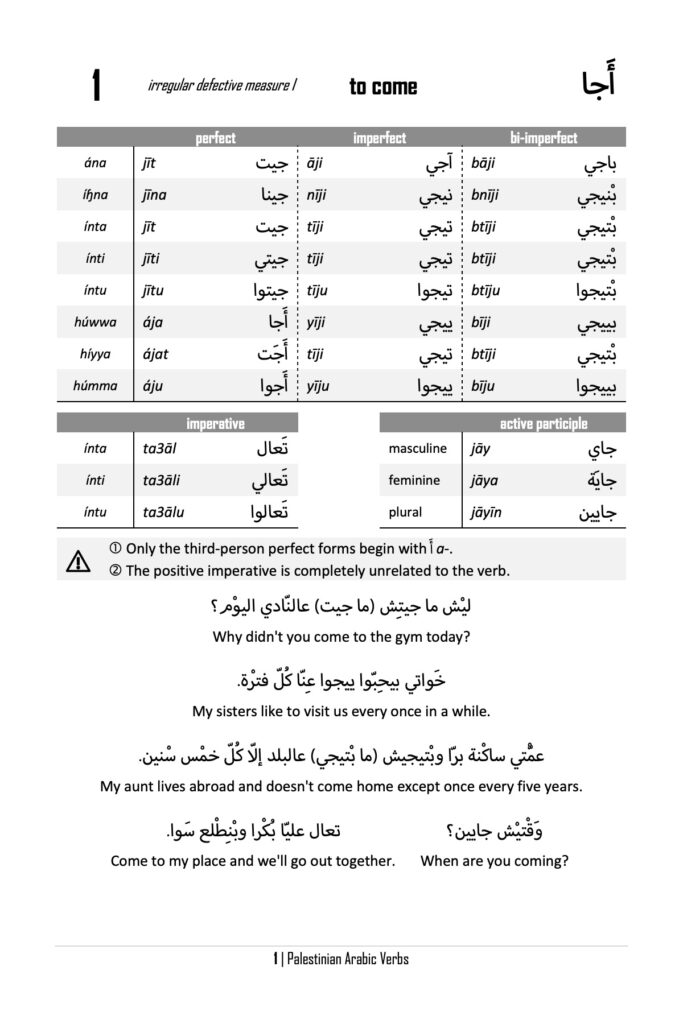
Tables appear in alphabetical order, numbered for easy reference. In the indexes, this table is referenced as T-1.
Arabic verbs are traditionally grouped into measures.
A single, common translation of each verb is given at the top of the table. Other possible translations and meanings can be found in the example sentences and indexes.
The most basic form of an Arabic verb (the 3rd-person singular perfect tense form) is used to reference the verb, as the infinitive is in English.
The persons appear in the left column, written only in phonemic transcription so as not to distract from the verb written in Arabic.
Notes highlight idiosyncrasies of certain verbs.
Tenses and moods head each column. Study the grammar section for the usage of each.
Conjugated verbs appear both in Arabic script and phonemic transcription.
Example sentences demonstrate the verb being used in various tenses, moods, and persons. Study the sentences to better understand the range of meanings (and translations) and idiomatic usage of the verb.
Pronunciation
A detailed guide shows the pronunciation of Palestinian Colloquial Arabic (PCA) and the phonemic transcription system used in the book.
PCA is a spoken dialect with no official status or rules of orthography. Native speakers tend to borrow spelling conventions from Modern Standard Arabic with some accommodations to account for PCA pronunciation. Arabic script, however, is ill-suited to show the actual pronunciation of PCA, including word stress and sound changes that occur when verbs are conjugated. Even if you are comfortable with Arabic script, it is advised that you pay close attention to the phonemic transcription (and audio tracks) to determine a more precise pronunciation of verbs. IPA (International Phonetic Alphabet) symbols are found in [square brackets] in the descriptions below.
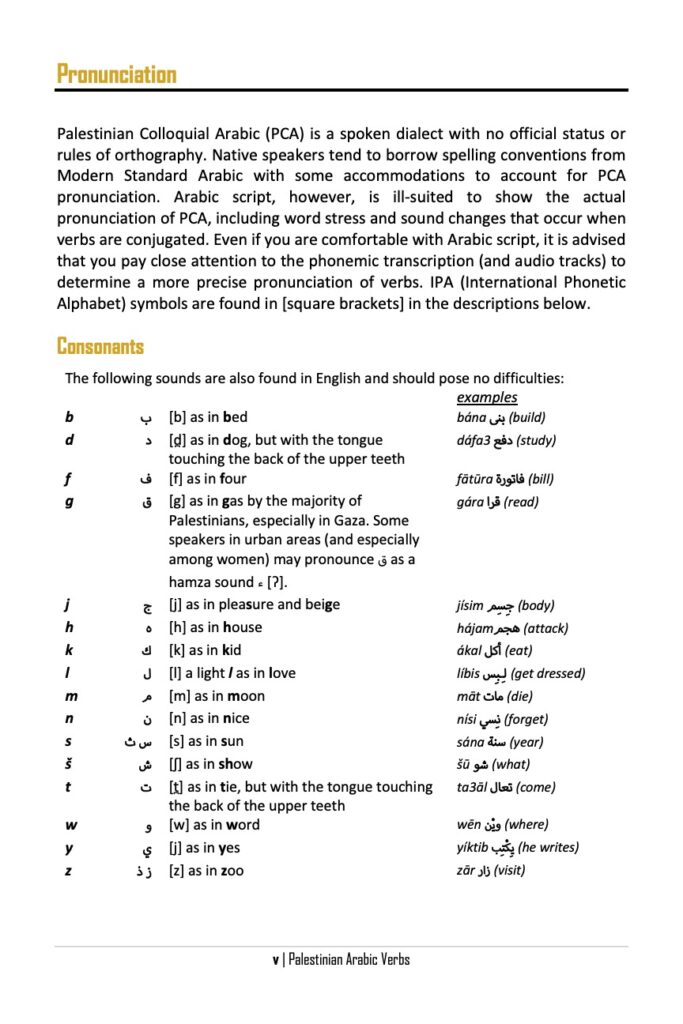
The Indexes
Index by Table Pattern
Use the Index by Table Pattern to conjugate hundreds more common Palestinian Arabic verbs.
First, find the verb you would like to conjugate in the Arabic Index or English Index. Next to it, you will see an alphanumeric label. For example, if you look up سبح or swim, you will see 1s1 following the verb.
Now, go to the Index by Table Pattern and find group 1s1. (Notice that 1s1 is shorthand for measure I, sound, first subgroup.)
You can see سبح swim listed alphabetically in group 1s1. There is no conjugation table for this particular verb, but all of the verbs belonging to group 1s1 share the same conjugation pattern. Use any of the verbs that do have a table (marked T-) to model the conjugation of سبح.
You can, for example, look up T-45 (table 45 for the verb دفع pay) and substitute the three radicals (consonants) of this verb with those of سبح swim. If you want to say they swim, find the equivalent of they pay in table 45 (the bi-imperfect húmma form): بيدْفَعوا bídfa3u and transform it into بيسْبَحوا bísbaɧu. You could also use T-52 or T-75, which follow the same pattern.
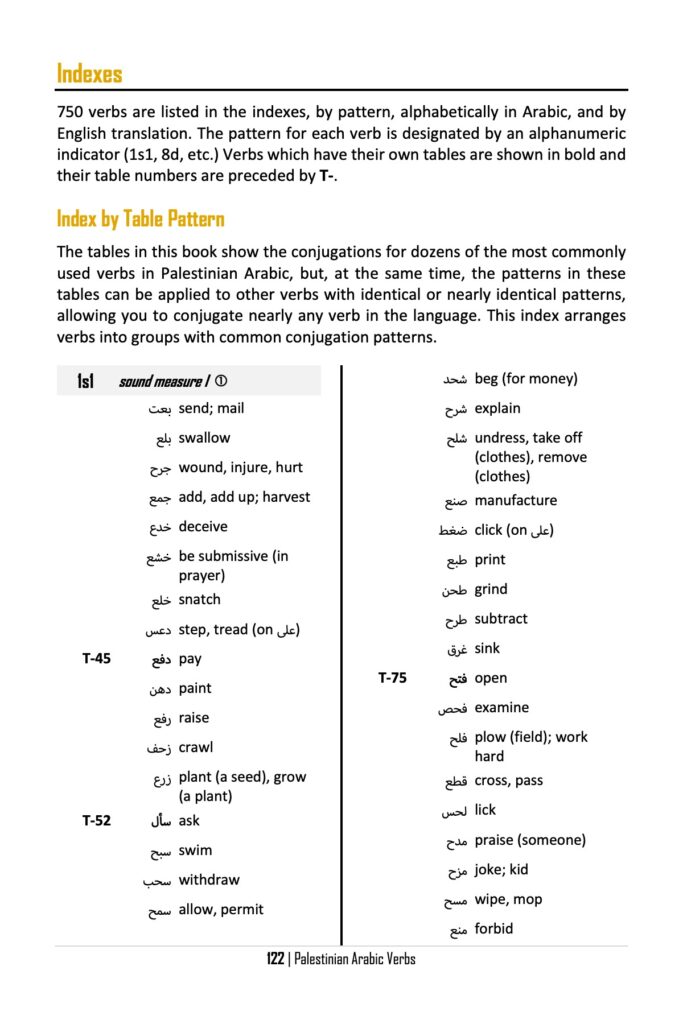
Arabic-English Index
750 common verbs are listed in the index. All fit into one of the patterns modeled by other verbs in the book. Once you find the needed verb, make note of its conjugation pattern and go back to the Index by Table Pattern to find an anchor verb that models its pattern in the book.
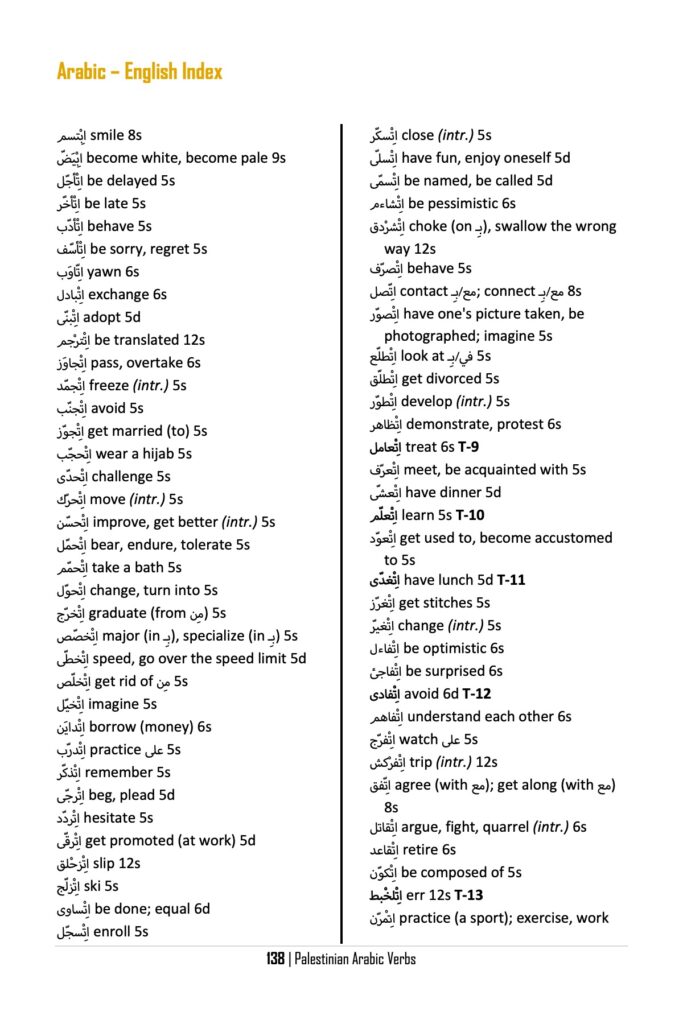
English-Arabic Index
You can also look up English verbs to find their equivalents in Arabic.
